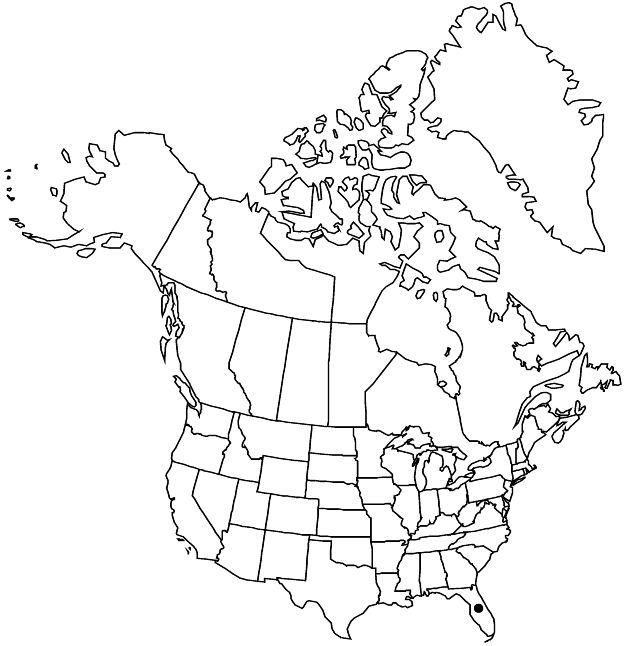Hypericum cumulicola
Rhodora 64: 234. 1962.
Herbs perennial, erect, branching at or just below ground level and in inflorescence, 2–7.5 dm. Stems: internodes 4-lined. Leaves appressed, sessile; blade linear-subulate, (1–)2.5–4 × 0.2–0.3 mm, subcoriaceous, margins incurved, apex acute, basal vein 1, midrib unbranched. Inflorescences subcorymbiform, to 13-flowered, branching mostly dichasial. Flowers 3–4 mm diam.; sepals ovate to elliptic or narrowly oblong, unequal, 1.5–2 × 0.6–1 mm, margins sometimes ciliate, not setulose-ciliate, apex acute to subacute; petals yellow, obovate-oblong, 3.5–5 mm; stamens 20–25, irregularly arranged; styles 1.5–2 mm; stigmas capitate. Capsules narrowly ovoid-conic, subrostrate, 3.5–6 × 1–1.5 mm. Seeds 0.5–0.6 mm; testa scalariform-reticulate. 2n = 12.
Phenology: Flowering spring–late fall (Mar–Nov).
Habitat: Scrub, on ancient white-sand dunes
Elevation: 50 m
Discussion
Of conservation concern.
Hypericum cumulicola is confined to Highlands and Polk counties and its habitat is under threat from bulldozers and citrus groves (D. B. Ward 1980); its nearest relative, with the same chromosome number, appears to be H. setosum.
Hypericum cumulicola is in the Center for Plant Conservation’s National Collection of Endangered Plants.
Selected References
None.
